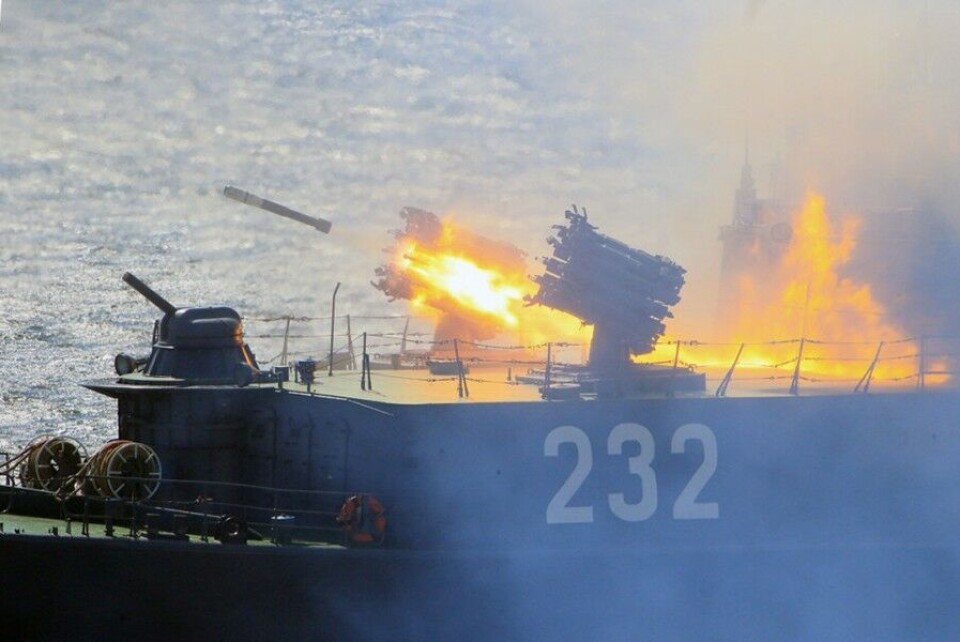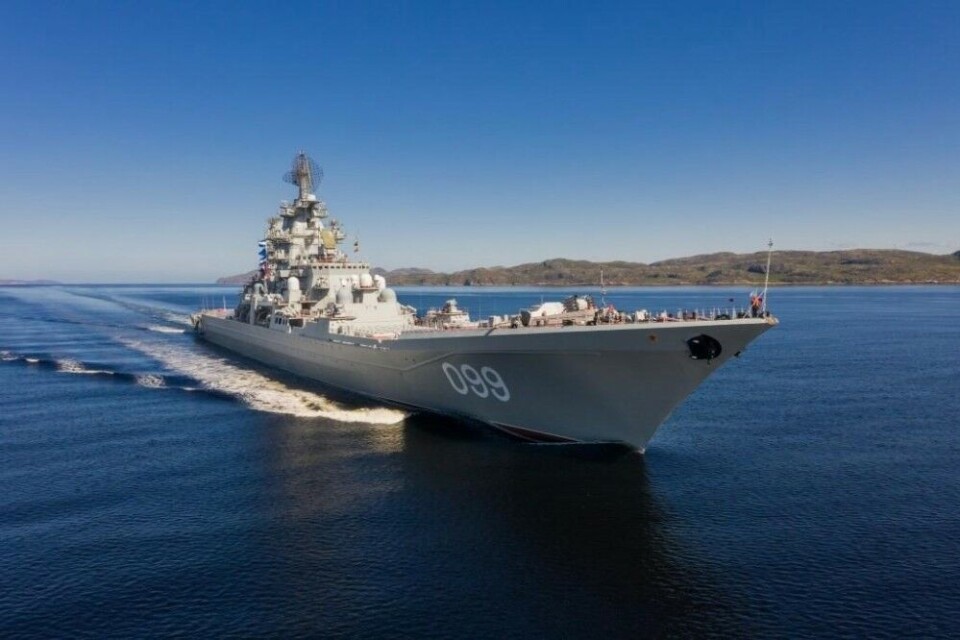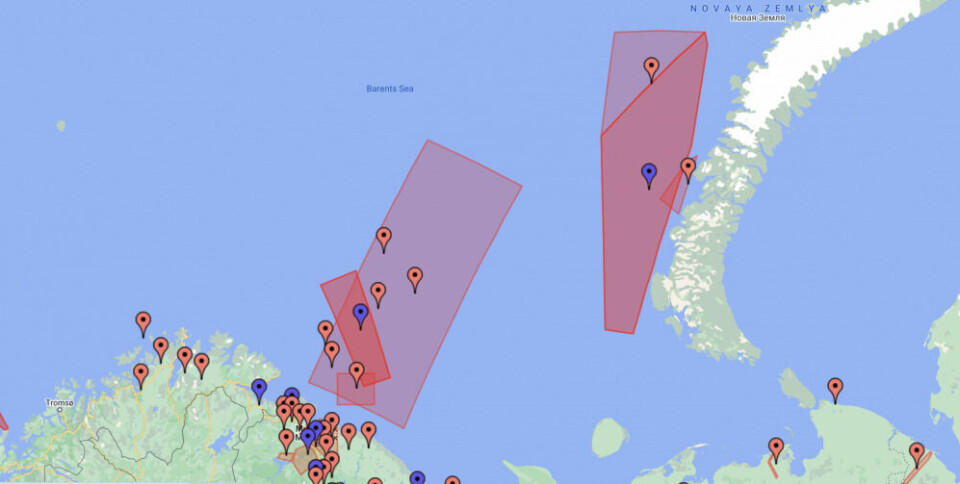
Northern Fleet kicks off large Barents-Arctic naval exercise
Surface warships, submarines and aviation are involved in waters from the Kola Peninsula to Franz Josef Land and Novaya Zemlya. One shooting area overlaps into Norwegian exclusive economic zone north of the Varanger fjord.
More than 10 warships and submarines are at sea, including “Pyotr Velikye”, the Northern Fleet’s large nuclear-powered battle cruiser, the press service in Severomorsk informs.
The naval vessels are supported by the air force and coast air defense units.
Exercise scenario, according to the navy headquarters, is deterring an enemy attack on Russia from the Barents Sea, as well as repelling attacks on the country’s Arctic islands.

Last week, a group of warships set out for the annual Arctic voyage. Those ships, including the destroyer “Admiral Levchenko” and the amphibious assault vessel “Aleksandr Otrakovsky” are currently far north in the Barents Sea, close to the shores of Franz Josef Land.
Russia has over the last decade rearmed its Arctic archipelagos with new runways for heavy military planes and fighter jets and established missile defense systems aimed at ensuring access and control over the Northern Sea Route. Franz Josef Land and Novaya Zemlya are both strategically important for protection of the bastion defense of the Barents Sea region, including the nuclear arsenal and second-strike capabilities.
Navigation maps and warnings to civilian air traffic show that live shooting will take place during the coming week across the Barents Sea. North of the Varanger fjord, one of the NOTAMs (Notice to Air Missions) stretches across the maritime delimitation line and into Norwegian Exclusive Economic Zone (EEZ).
The warning, active for August 19 and 20, does not specify what weapons will be used. Previously, Russia’s Northern Fleet has exercised off the coast of Norway with both artillery and rockets, as well as launching a cruise missile. The missile, of the hypersonic Tsirkon type, was tested from waters near Norway’s Bear Island in the western Barents Sea during a bastion defense exercise held a few days prior to Russia’s large-scale military attack on Ukraine in February.
There are currently six areas in the Barents Sea closed off for military live shootings. The largest, occupying waters from the Varanger fjord to the Kildin Bank in the south to about 74 ° North, is active from August 21 to 26.
“It is planned to carry out a number of firings with naval missiles, artillery and anti-submarine weapons at surface, underwater and air targets in the Barents Sea,” the Northern Fleet informs.

NATO countries, like the UK, Norway and US, are keeping open eyes monitoring the ongoing large Russian exercise.
Earlier this week, both US and UK electronic reconnaissance aircraft have been on missions along the coast of the Kola Peninsula. On Monday, a MiG-31 was scrambled to meet the British plane, an incident Moscow said violated Russian airspace. London denied any border violations and said the Russian MiG-31 “conducted an unsafe close pass”.
Spokesperson with Norway’s Joint Headquarters, Marius Vågenes Villanger, confirms to the Barents Observer that one of the current activated warning areas for live shootings is located outside the coast of Norway. This, however, is outside the 12 nautical miles territorial boundaries north of Varanger.
“Any nation has the right to conduct exercises and training in international waters and air space,” Villanger says.
“We are aware of the announced warning areas outside the coast. Both Norwegian and allied forces are keeping close eyes on all activities near our territories,” the spokesperson notes.
It is not immediately clear from open sources what weapons are to be used in the easternmost warning areas along the coast of Novaya Zemlya. That warnings cover both huge distances at sea, as well as coastal warnings (PRIP) closer to shore, as announced via the Port Administration for Northwestern Russia in Murmansk.
These are waters near the Pankovo test site on Novaya Zemlya where testings of the Burevestnik nuclear-powered missile previously has taken place. A British warship is currently staying just outside the warning areas. Civilian tracking portals do not name the ship, but it is likely the “HMS Enterprise”, a hydrographic oceanographic survey vessel.

















